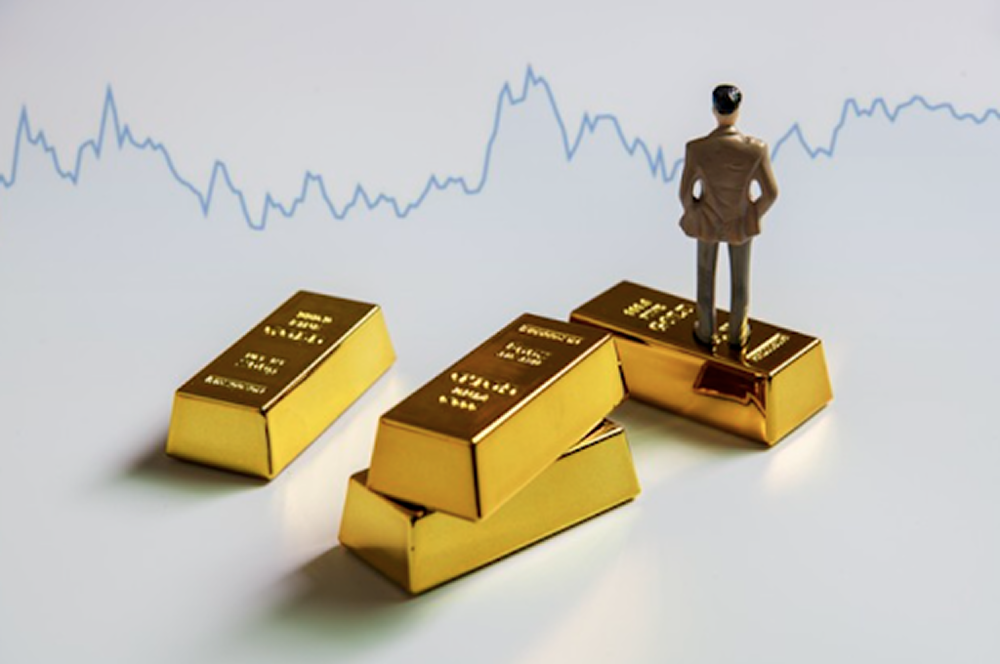According to Jinshi Data, on April 21, 2025, during the Asian trading session, the price of spot gold continued to rise, breaking previous highs and setting a new historical record, reaching $3,385 per ounce. Amid increasing global economic uncertainty and doubts about the credibility of the US dollar, gold and Bitcoin are gaining attention as safe-haven assets.

Behind the Surge in Gold Prices
Jinshi Data pointed out that spot gold broke through $3,370 per ounce during the Asian trading session, reaching a high of $3,385 per ounce, with an increase of over 20% for the year. Goldman Sachs recently raised its gold price target for the end of 2025 to $3,700 per ounce, while UBS Wealth Management predicts that gold prices could reach $3,500 per ounce. Factors driving the rise in gold prices include:
Dollar Credit Crisis: Industrial Bank Research stated that the dollar credit issue continues to fester, and the liquidity crisis triggered by the Trump administration's tariff policies further weakens the dollar's attractiveness. Citic Securities research pointed out that the damage to the dollar system's credit is irreversible, enhancing gold's monetary attributes.
Surge in Safe-Haven Demand: Escalating geopolitical tensions, such as the Russia-Ukraine conflict and uncertainties in the Middle East, have prompted investors to turn to gold. Trump's statement that "those who own gold make the rules" has further ignited market enthusiasm.
Central Bank Gold Buying Frenzy: A Goldman Sachs report shows that global central bank demand for gold exceeds expectations, and Chinese financial regulators have allowed insurance funds to invest in gold, with central banks around the world increasing their gold reserves.

Bitcoin and Gold: A Signal of Synchronized Rise?
X platform user @BeliaSchoo91221 posted that Bitcoin has broken through $87,000, and gold has set a new historical high for the 55th time in the past 12 months, viewing it as a "voting behavior" by the market regarding the fragility of fiat currency systems. This view resonates with some, but the relationship between gold and Bitcoin is not simply synchronous; it is complex and multidimensional.
Historical Correlation and Lag Effect: X user @BTW0205 pointed out that there is a lagged correlation between gold and Bitcoin, with gold typically responding first to inflation expectations and monetary easing signals, while Bitcoin follows up with a breakthrough of previous highs within 100-150 days. Historical data shows that gold, as a traditional safe-haven asset, is more sensitive to macroeconomic changes, while Bitcoin has both growth option and inflation hedging attributes.
Similarities and Differences in Driving Factors: The rise in gold is mainly driven by safe-haven demand, central bank gold purchases, and a weak dollar. Bitcoin benefits from the crypto market boom, institutional adoption, and demand for inflation hedging. X user @Upanddown7788 believes that there is no "spillover effect" between Bitcoin and gold, but rather different investment logics as funds flow out of US stocks. Gold reacts strongly to geopolitical risks, while Bitcoin is more influenced by tech stock volatility and crypto policies.
Resonance of Market Sentiment: Despite different driving factors, gold and Bitcoin exhibit a certain resonance under expectations of a weakening dollar. @BeliaSchoo91221 believes that the simultaneous rise of the two reflects a lack of trust in the dollar and fiat currency systems. The Goldman Sachs report also suggests that the "myth" of the dollar is being torn apart, boosting demand for safe-haven assets.

Investor's Choice: Gold or Bitcoin?
Gold and Bitcoin each have their advantages, and investors need to choose based on their risk preferences and market environment:
- Stability of Gold: As a physical asset, gold has lower volatility and is suitable for long-term value preservation. Citic Securities predicts that gold prices could reach $3,337 per ounce by mid-2025, and in an optimistic scenario, could reach $3,620 per ounce. Its safe-haven attributes are particularly prominent during economic recessions or geopolitical conflicts.
- High Risk and High Return of Bitcoin: Bitcoin's volatility is much higher than that of gold, making it suitable for investors with a higher risk appetite. The crypto market boom in 2025 may drive up Bitcoin prices, but regulatory uncertainties still pose risks.
Portfolio Allocation: Some investors choose to include both in their portfolios, using gold's stability to hedge against Bitcoin's high volatility. UBS recommends increasing gold allocation to cope with macro risks while also paying attention to tactical opportunities in crypto assets.
Market Outlook and Risk Warning
Although both gold and Bitcoin benefit from the current market environment, risks should not be overlooked. The gold market may experience a pullback in the short term due to profit-taking or a shift in Federal Reserve policy. Bitcoin faces pressures from tightening regulations and technical overbought conditions. Federal Reserve Chairman Powell warned that tariffs could push up inflation, and weakened expectations for interest rate cuts may exert pressure on the prices of both.
Jinshi Data advises investors to closely monitor the Federal Reserve's interest rate decisions and geopolitical dynamics. Goldman Sachs analyst Lina Thomas expects that central bank gold purchases and safe-haven demand will continue to support gold prices, while Bitcoin's long-term trend depends on institutional adoption and market sentiment.
This article represents the author's personal views and does not reflect the stance or views of this platform. This article is for informational sharing only and does not constitute any investment advice to anyone.
Join our community to discuss this event
Official Telegram community: t.me/aicoincn
Chat room: Wealth Group
免责声明:本文章仅代表作者个人观点,不代表本平台的立场和观点。本文章仅供信息分享,不构成对任何人的任何投资建议。用户与作者之间的任何争议,与本平台无关。如网页中刊载的文章或图片涉及侵权,请提供相关的权利证明和身份证明发送邮件到support@aicoin.com,本平台相关工作人员将会进行核查。




